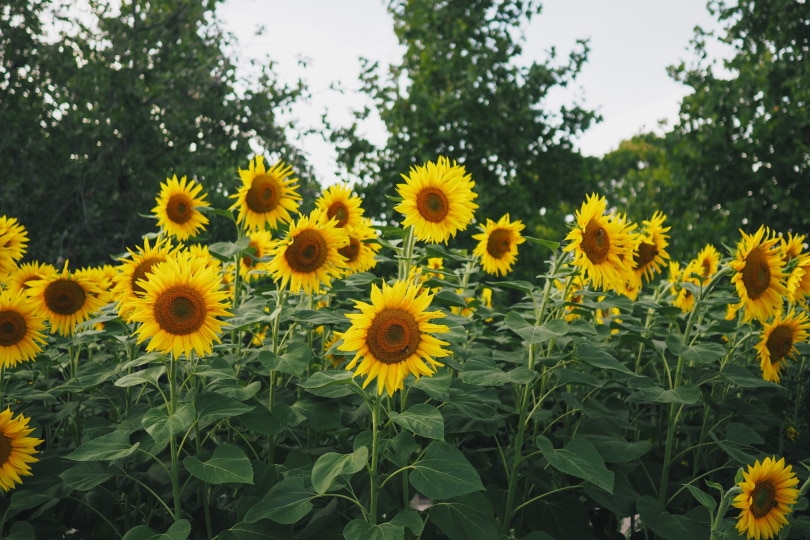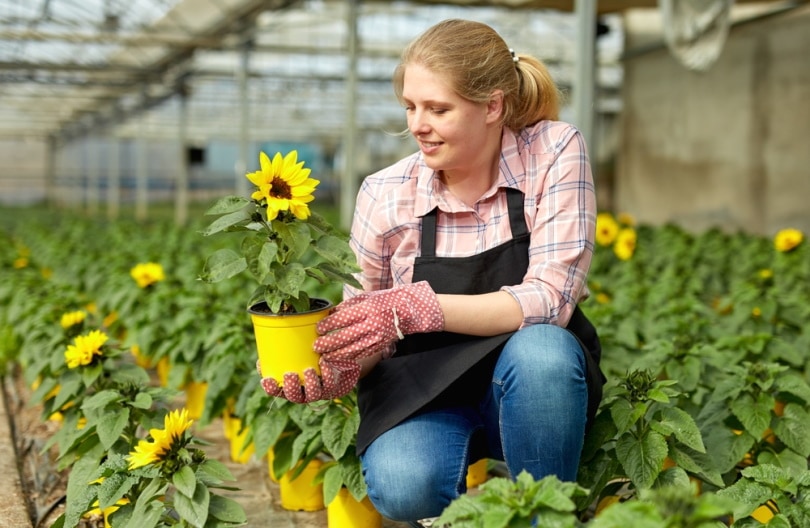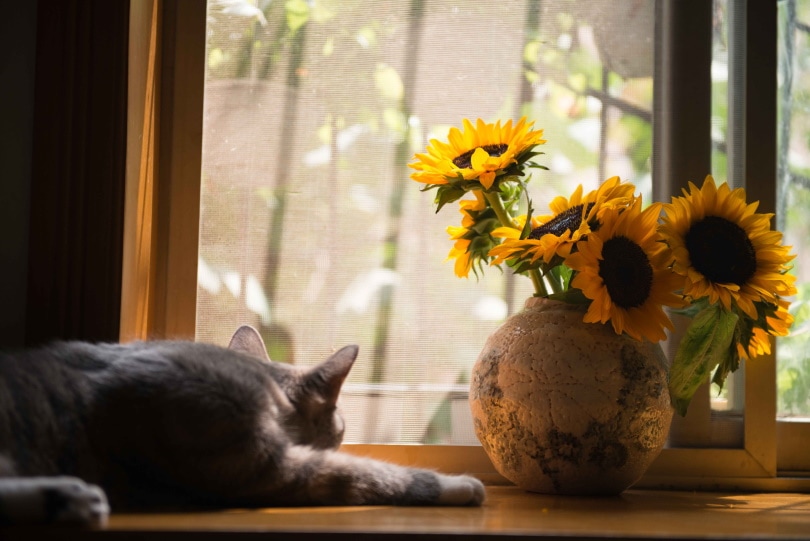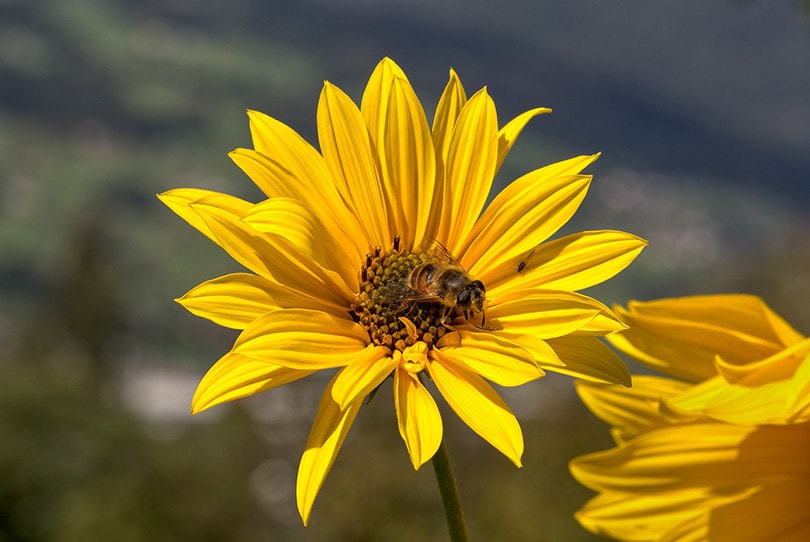How & When to Plant Sunflowers: Facts & Suggestions
-
Ashley Bates
- Last updated:

In many places, sunflowers are the trademark of the summer months. As the name implies, these beautiful flowers blossom in full sun, soaking up all the rays. But just when is the best time to plant these large, vibrant flowers?
In the spring, you can sow these seeds to grow lovely blooms that are as delicious as they are beautiful. Let’s discuss sunflower care and how to promote optimal growth.
What Sunflowers Need to Thrive
Full Sun
It might go without saying, but sunflowers most need light to thrive. They absolutely soak up every ounce of sunlight they can get, adding to their beauty and making them tougher and more vibrant.
Alkaline Soil
Sunflowers can thrive in various environments, but they prefer more alkaline soil. Typically, sunflowers grow best in soil with a pH of 6.0 to 7.5. It should also be nutrient-rich and full of organic matter.
Fertilization
Replenishing the soil is a must. You can give your sunflowers commercial fertilizers to boost growth. Also, if you plant your sunflowers with other plants, understand how much nutrients they suck up to avoid starving other plants.

Adequate Water
Sunflowers like having a decent amount of water, but they do not do well in ultra moist soil. They don’t mind drying out between watering. So, make sure not to plant your sunflowers in an area that stays soppy.
Planting Timing
Like most other seeds, you can plant your sunflowers in the spring months. Since most sunflowers begin germination when temperatures reach 70 to 85 degrees, you should plant just before the ground reaches these temperatures—roughly consistently 65 degrees.
When planted in the right conditions, sunflowers root very well and easily start from seed. So, there is no need to start the plants indoors before transplanting. Sow directly into the soil.
Sowing Sunflowers
Sunflowers are fantastic because you can sow them directly into the ground. When the weather is warm enough and consistently similar in temperature, you can plant your sunflowers wherever you choose.
If you have sunflowers too close together, the leaves could starve for sunlight, and you could end up with overcrowded, unhealthy growth.
The best rule of thumb is to plant standard-sized sunflower seeds roughly 6 inches apart. You can sow seeds by pressing your thumb roughly an inch deep into the soil. You can drop a seed in the small hole and lightly cover it with dirt.
Because some sunflowers can get upwards of 6 feet tall, we recommend planting large varieties at least 12 inches apart—they need space to grow! However, smaller types only need roughly 3 inches between.
After sprouting, you can thin the seedlings, leaving the strongest to grow.
Lighting Considerations
Sunflowers absolutely love the sun, if you didn’t already know. So, that means they want full sunshine all day long, and they will cheerfully grow towards the light.
So, you will have to choose a full sun space for at least six hours per day. If your sunflowers don’t get enough sunlight, they can retard flower formation—and you definitely won’t want that!

Sunflower Blooms
After you see your sunflower sprouts, you may wonder how long it will take to get full blooms. After your plant sprouts, you can expect to see blooms begin within 30 days.
Growth Issues
As I mentioned above, sunflowers can sail to grow proper blooms when they don’t get enough adequate lighting. Also, overcrowding can happen if your sunflowers are too close together.
But some other issues come into play as well.
Pests
Insects and pests, for instance, can hinder the growth of sunflowers and eat off viral parts of leaves and petals. Some common pests for sunflowers include banded sunflower moths, cutworms, seed weevils, sunflower beetles, and sunflower moths.
Poor Soil Conditions
While sunflowers are often the opposite of picky regarding growth conditions, they love rich, moist soil. For best results, water your sunflowers between rainy days to keep them going strong. If your soil is too acidic, it could also conflict with growth.
Cold Tolerance
Despite being sun-loving plants, they are pretty hearty too. Once your sunflowers pollinate and drop petals, they become more tolerant to the cold. These plants can withstand temperatures as low as 25 degrees.
However, when you start these plants, they should be in warm soil above freezing temperatures to properly sprout.

Harvesting Sunflowers
Who doesn’t love the delicious seeds inside of sunflowers? It’s one of the most rewarding parts of owning them. While timing can be a little different for each flower, there is a telltale way to know when to cut.
You simply wait until you start to see petals wilt and brown. Once this part sets in, it’s only a matter of time. You can sever the head and remove the seeds.
Sunflower Fun Facts
1. Sunflowers are native to the Americas
Even though sunflowers now thrive on many continents, they originated in North America. It was grown intentionally by indigenous tribes to produce the crop.
2. Sunflowers are historically medicinal
Sunflowers have been used in old-time medicines for colds, coughs, and pulmonary affections.
3. Each sunflower contains many smaller flowers

If you look closely at the head of a sunflower, you’ll see thousands of smaller flowers therein.
4. Famous artists have often painted sunflowers
Vincent Van Gogh was likely the most famous artist who painted sunflowers. However, other artists were taken by these beauties, too, showing up in many historical works.
5. Sunflowers have roots in Greek mythology
According to Greek mythology, the sunflower is connected to Clytie and Helios’ story of love and heartbreak.
6. Sunflower oil has anti-inflammatory properties
Sunflower seeds contain vitamins and other compounds known to reduce inflammation. This vitamin E also improves skin and hair.
In Conclusion
Growing sunflowers is so easy, you can simply plant and let them grow. Sometimes, you might have to stake sunflowers if they need a little stability, but they are otherwise low-maintenance. Just give them some sunshine and adequate water, and they will thrive.
Look out for pests and poor soil conditions to ensure the longevity of your plant.
Featured Image Credit: Piqsels
Contents
